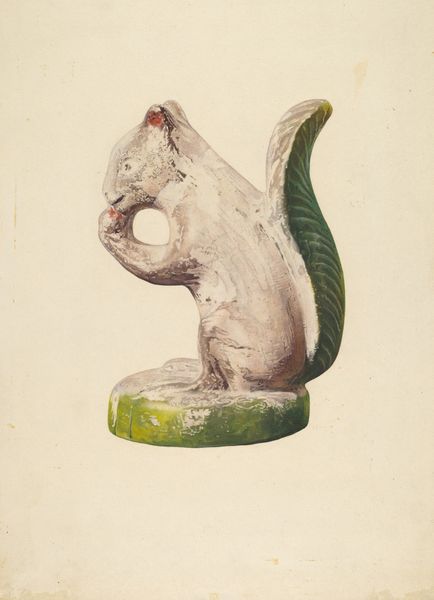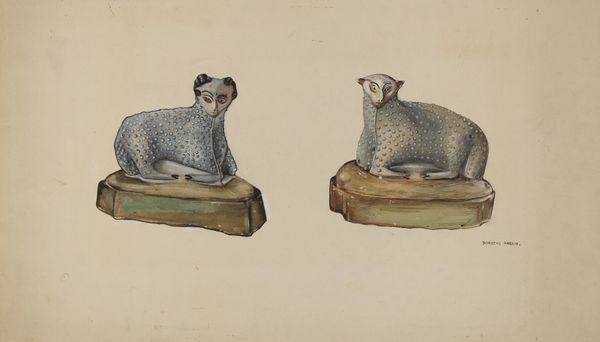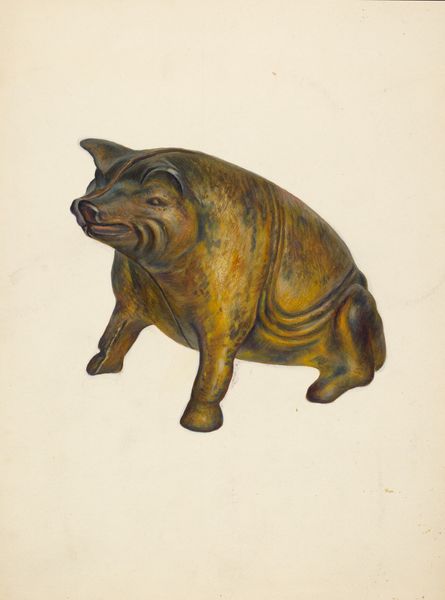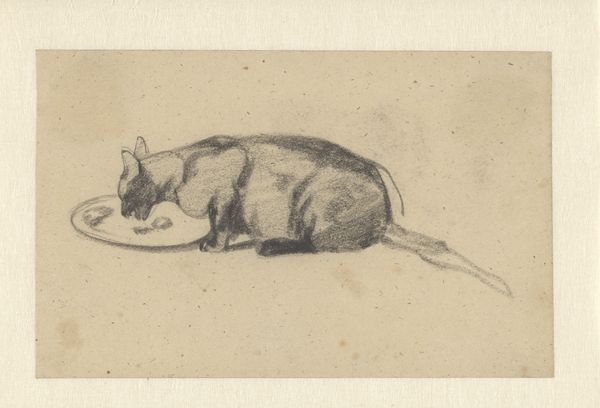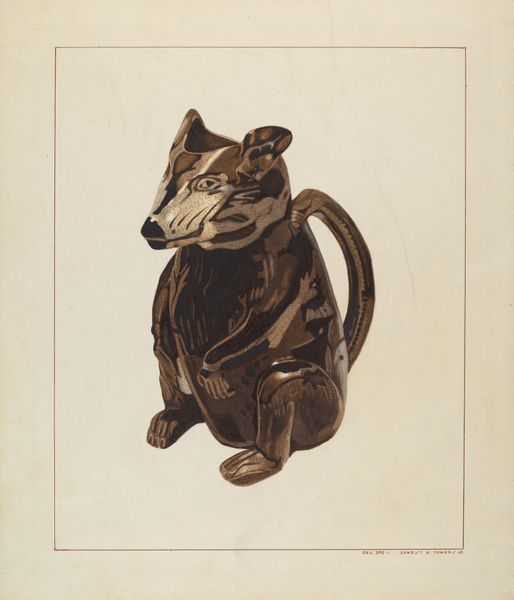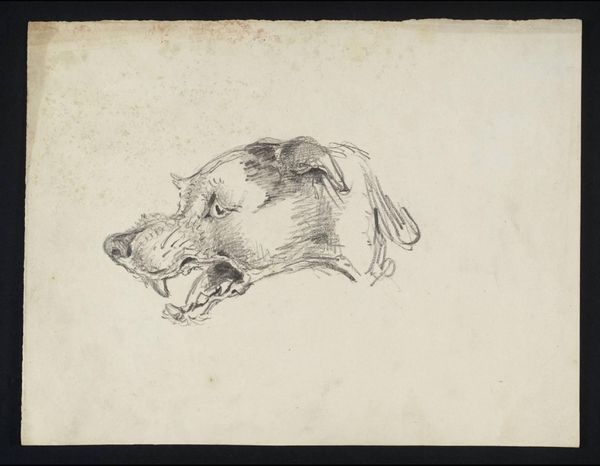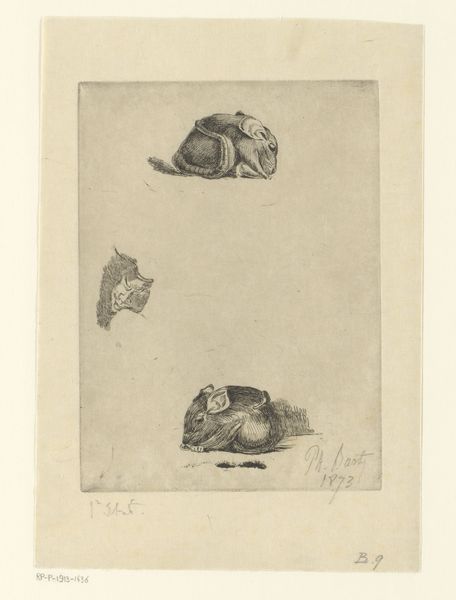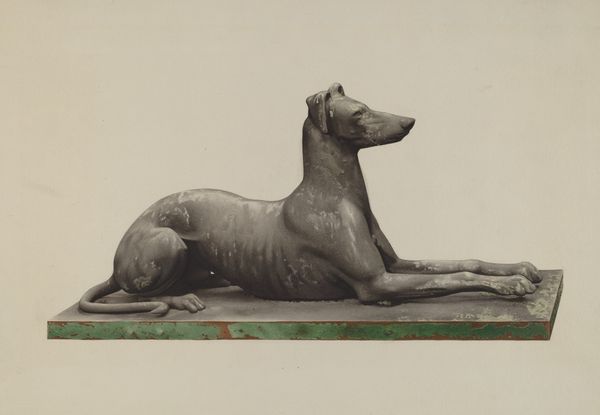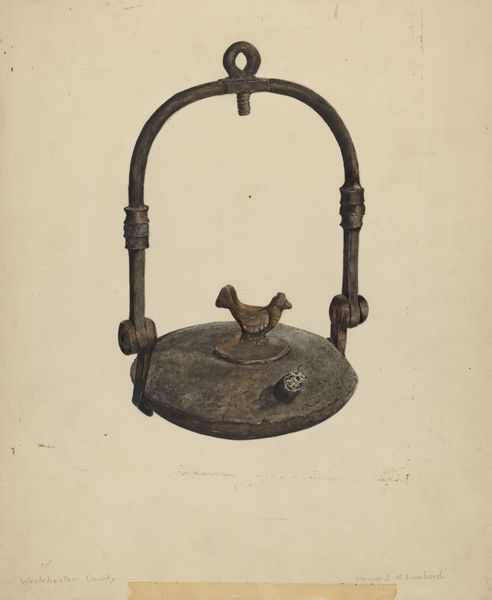
drawing, pencil, charcoal
#
drawing
#
charcoal drawing
#
oil painting
#
pencil drawing
#
folk-art
#
pencil
#
charcoal
#
charcoal
#
realism
Dimensions: overall: 43.6 x 38.2 cm (17 3/16 x 15 1/16 in.) Original IAD Object: 11" long; 4 1/2" high; 4 1/2" wide
Copyright: National Gallery of Art: CC0 1.0
Editor: This is "Pa. German Cake Mold," created between 1935 and 1942 by Walter Hochstrasser. It's a drawing depicting two metal cake molds, each in the shape of a pig. There's a quaintness to the drawing, but the molds themselves seem so rigid and formal. What do you see in this piece, considering it’s folk art? Curator: I see a fascinating intersection of domesticity and cultural identity. The Pennsylvania Dutch, despite their name, were primarily of German descent. Baking, and these pig-shaped molds specifically, become powerful symbols. These weren't just tools, they were embodiments of tradition passed down through generations. Editor: So, the seemingly simple act of baking connects to a broader history? Curator: Absolutely. Think about who was likely using these molds. Probably women, within the domestic sphere, yet actively maintaining cultural heritage through foodways. Hochstrasser’s act of drawing them elevates them. It forces us to consider the cultural labor embedded within objects we might otherwise overlook. Editor: That's a compelling point. Are you saying it’s about more than just the technique or style of folk art? Curator: Exactly. It's about unveiling the socio-political narratives encoded within these seemingly mundane objects. Who is given the agency to represent their culture and in what ways? Were folk artists such as Hochstrasser fully recognized in the established art world of his time? The answers tell us much about hierarchies and power structures. What do *you* make of the pig as the chosen shape? Editor: Well, pigs often represent prosperity. Perhaps these molds signified a family's hope for abundance, linking back to the struggles and aspirations of the Pennsylvania Dutch community? Curator: Precisely. By visually documenting this piece, Hochstrasser asks us to see value in the craftsmanship and the lives of people typically left out of art history narratives. Editor: I’ll never look at a cake the same way again. I now appreciate this art and its ability to prompt conversations about history, identity, and the power of the everyday.
Comments
No comments
Be the first to comment and join the conversation on the ultimate creative platform.

